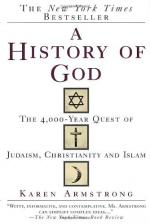
|
| Name: _________________________ | Period: ___________________ |
This test consists of 15 multiple choice questions and 5 short answer questions.
Multiple Choice Questions
1. What did this message lead to?
(a) An agreement with the Quraysh in Mecca.
(b) An agreement with the Faylasufs.
(c) A rift with the Quraysh in Mecca.
(d) A rift with the Sunnis in Mecca.
2. Who is Bernard?
(a) The Pope of the Roman Catholic Church.
(b) The abbot of the Cistercian Abby of Clairvaux in Burgundy.
(c) A popular priest in Paris.
(d) An archbishop in the Roman Catholic Church.
3. The Jews tried to modify this theory ____________.
(a) To allow God more time to create the world.
(b) To allow God more power over humanity.
(c) To allow God a certain degree of spontaneity and free will.
(d) To allow God to have more control.
4. The Falsafa movement reached its peak with the work of ____________.
(a) Abu Walid ibn Ahmad ibn Rushd.
(b) Abu Hassan Husein.
(c) Abu Allah Hasid.
(d) Abu Ali ibn Sina.
5. Once "God" is presumed to exist as a separate external entity, humans can _____________.
(a) Learn to be more loving and understanding.
(b) Forget about God.
(c) Be like God.
(d) Externalize and worship their own prejudices and desires.
6. Initially, Muhammad's message was to warn the Quraysh about ____________.
(a) The coming of Salvation.
(b) Asking for forgiveness of sins.
(c) The need for grace.
(d) Amending their lives and paying less attention to the accumulation of wealth and power.
7. At this synod, the modern Christian creed, called ________ was first promulgated.
(a) The Nice Creed.
(b) The Constantine Creed.
(c) The Nicene Creed.
(d) The Nicaea Creed.
8. A counter movement came into being when the Shiis declared ____________.
(a) War on the Faylasufs.
(b) God's presence on earth was in the form of a man named Jesus.
(c) God's presence on earth was embodied in some mysterious way by their Imams.
(d) God did not exist.
9. The Romans, initially regarded Christianity as _____________.
(a) An odd phenomenon.
(b) A large threat.
(c) A religion of which to become a member.
(d) Just one more god and religion, which they allowed to exist alongside their own gods and beliefs.
10. Whose preaching resulted in the belief that the newly emerging religion could and should be embraced by the Gentiles?
(a) St. Thomas Aquinas's.
(b) St. Paul's.
(c) St. Simon's.
(d) St. Peter's.
11. Christianity was a religion of __________.
(a) Romans.
(b) The wealthy.
(c) Slaves and lower caste people.
(d) Europeans.
12. What city did this tribe rule?
(a) Jordan.
(b) Jerusalem.
(c) Mecca.
(d) Galilea.
13. Who is a distinguished Muslim philosopher in Cordova, Spain who had an enormous influence on both Jews and Christians and specifically on theologians such as Thomas Aquinas and Albert the Great?
(a) Abu Ali ibn Sina.
(b) Abu Allah Hasid.
(c) Abu Hassan Husein.
(d) Abu Walid ibn Ahmad ibn Rushd.
14. They tried to show that al-Lah was compatible with ____________.
(a) Their rationalist's ideals.
(b) Mysticism.
(c) A personal God.
(d) Their fundamentalist ideals.
15. The emergence of the cult of Jesus from the established church of Judaism was accompanied by passionate dispute, and many disciples of Jesus ____________.
(a) Remained within the conventional Jewish faith.
(b) Started their own religion.
(c) Left the Jewish faith.
(d) Lost faith in religion.
Short Answer Questions
1. This competing philosophy formed the basis of the theology of __________.
2. What vision did Muhammad experience?
3. What was the belief in question?
4. What two philosophers had competing ideas regarding the nature of the Christian God?
5. What is the Kabah?
|
This section contains 585 words (approx. 2 pages at 300 words per page) |

|




